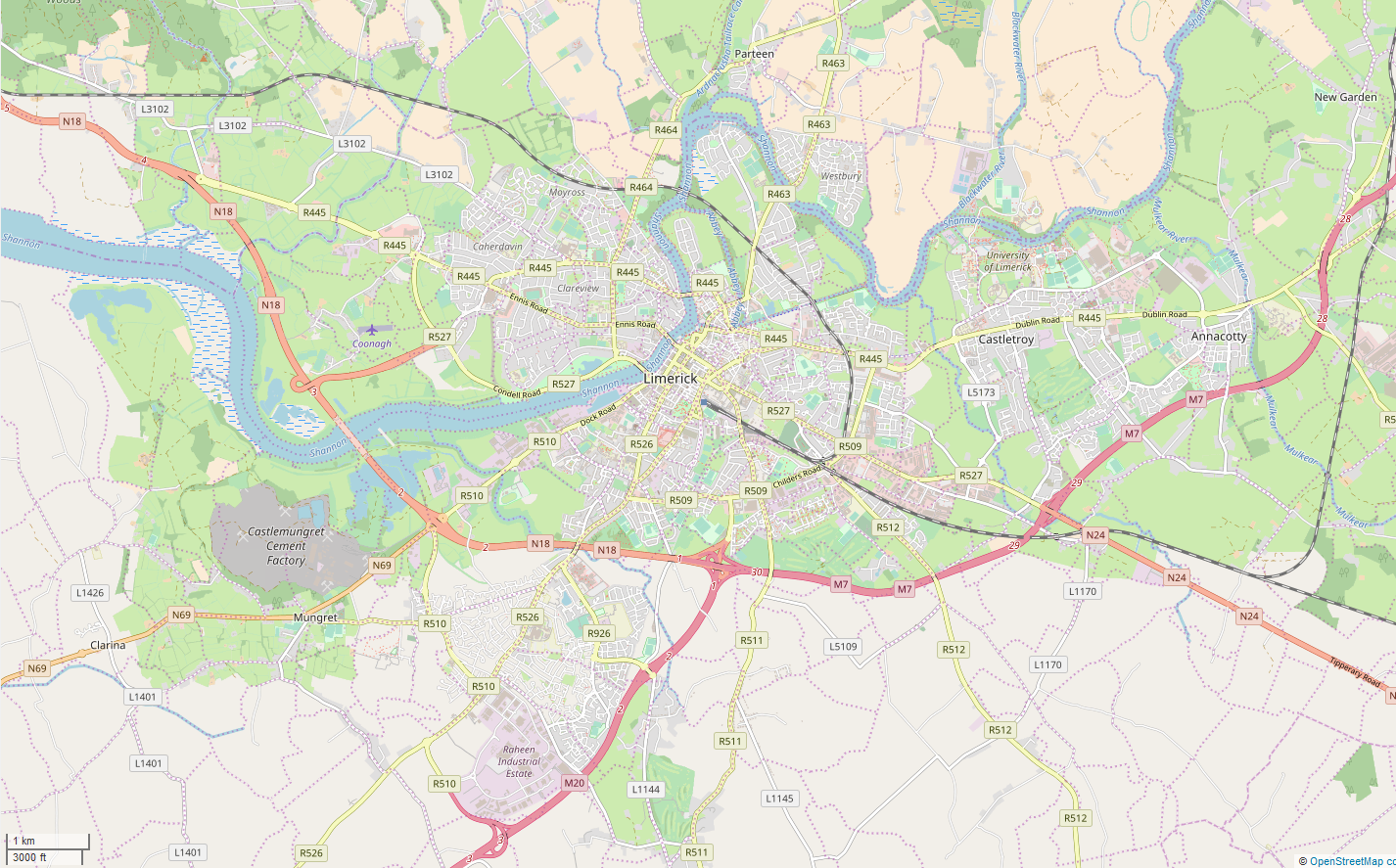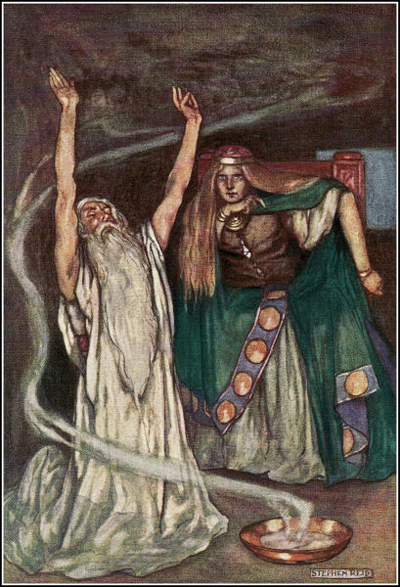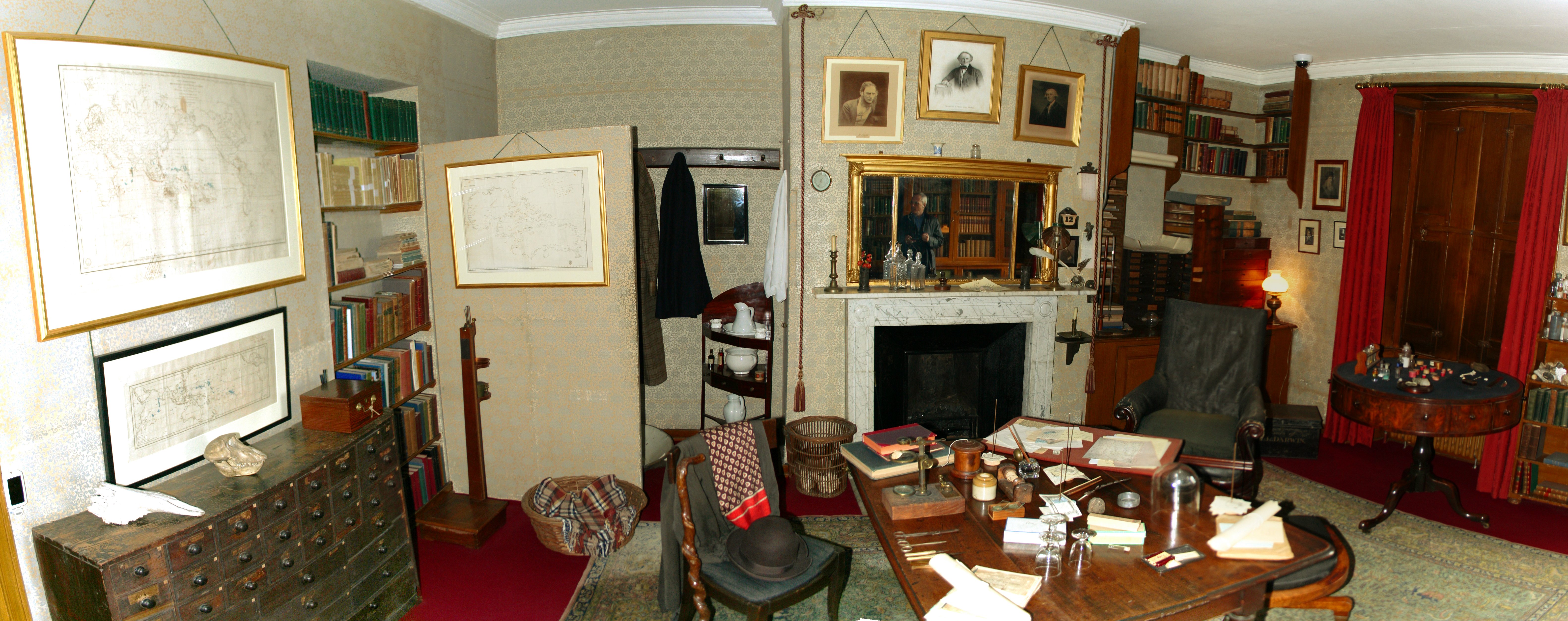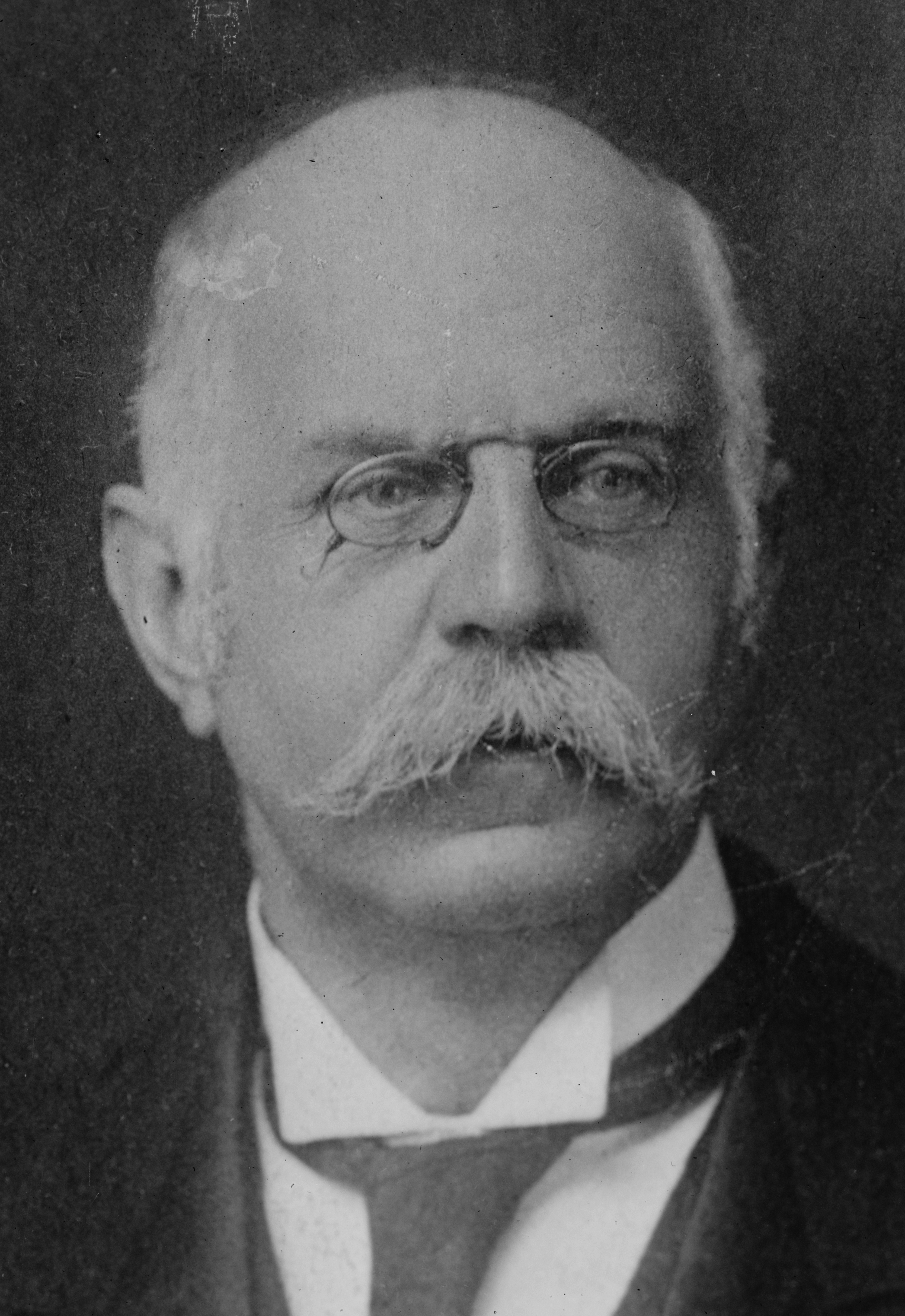|
Elinor Darwin
Elinor Mary Darwin (née Monsell; 1879–1954) was an Irish born illustrator, engraver and portrait painter. Her illustrations were included in several of her husband, Bernard Darwin's books for children. Personal life Elinor Mary Monsell was born in Limerick, Munster, Ireland, the eldest daughter of William Thomas Monsell (1843–1887), a magistrate and inspector of facturers, and Elinor Vere, daughter of Hon. Robert O'Brien, of Old Church, Limerick (son of Sir Edward O'Brien, 4th Baronet). William Thomas Monsell's father, Rev. John Samuel Bewley Monsell (1811–1875), vicar of Egham, Surrey, was first cousin to William Monsell, 1st Baron Emly; William Thomas served as Lord Emly's private secretary during his time as Postmaster General.Joseph Jackson Howard. Visitation of England and Wales'. Priv. print.; 1905. p. 9. At 17 years of age Elinor left Ireland for London. Her brother John Robert Monsell was a children's author and illustrator, who collaborated with Herbert Hughes ... [...More Info...] [...Related Items...] OR: [Wikipedia] [Google] [Baidu] |
Limerick
Limerick ( ; ga, Luimneach ) is a western city in Ireland situated within County Limerick. It is in the province of Munster and is located in the Mid-West which comprises part of the Southern Region. With a population of 94,192 at the 2016 census, Limerick is the third-most populous urban area in the state, and the fourth-most populous city on the island of Ireland at the 2011 census. The city lies on the River Shannon, with the historic core of the city located on King's Island, which is bounded by the Shannon and Abbey Rivers. Limerick is also located at the head of the Shannon Estuary, where the river widens before it flows into the Atlantic Ocean. Limerick City and County Council is the local authority for the city. Geography and political subdivisions At the 2016 census, the Metropolitan District of Limerick had a population of 104,952. On 1 June 2014 following the merger of Limerick City and County Council, a new Metropolitan District of Limerick was formed within ... [...More Info...] [...Related Items...] OR: [Wikipedia] [Google] [Baidu] |
Charles Darwin
Charles Robert Darwin ( ; 12 February 1809 – 19 April 1882) was an English naturalist, geologist, and biologist, widely known for his contributions to evolutionary biology. His proposition that all species of life have descended from a common ancestor is now generally accepted and considered a fundamental concept in science. In a joint publication with Alfred Russel Wallace, he introduced his scientific theory that this branching pattern of evolution resulted from a process he called natural selection, in which the struggle for existence has a similar effect to the artificial selection involved in selective breeding. Darwin has been described as one of the most influential figures in human history and was honoured by burial in Westminster Abbey. Darwin's early interest in nature led him to neglect his medical education at the University of Edinburgh; instead, he helped to investigate marine invertebrates. His studies at the University of Cambridge's Christ's Col ... [...More Info...] [...Related Items...] OR: [Wikipedia] [Google] [Baidu] |
Dun Emer Press
The Dun Emer Press (''fl.'' 1902–1908) was an Irish private press founded in 1902 by Evelyn Gleeson, Elizabeth Yeats and her brother William Butler Yeats, part of the Celtic Revival. It was named after the legendary Emer and evolved into the Cuala Press. History In 1902, Elizabeth and her sister Lily Yeats joined Evelyn Gleeson in establishing a craft studio at Dundrum, near Dublin, called Dun Emer. This specialized in printing and other crafts, with Elizabeth Yeats in charge of the printing press. While living in London, Elizabeth Yeats had been part of the circle of William Morris, and had been inspired by his printing work. Gleeson offered the Yeats sisters her large house in Dundrum, in which a crafts group providing training and work for young women, in the fields of bookbinding, printing, weaving, and embroidery, could live and work. Bookbinding workshops were a later addition to the studio. [...More Info...] [...Related Items...] OR: [Wikipedia] [Google] [Baidu] |
Stephen Gwynn
Stephen Lucius Gwynn (13 February 1864 – 11 June 1950) was an Irish journalist, biographer, author, poet and Protestant Nationalist politician. As a member of the Irish Parliamentary Party he represented Galway city as its Member of Parliament from 1906 to 1918. He served as a British Army officer in France during World War I and was a prominent proponent of Irish involvement in the Allied war effort. He founded the Irish Centre Party in 1919, but his moderate nationalism was eclipsed by the growing popularity of Sinn Féin. Family background Stephen Gwynn was born in Saint Columba's College in Rathfarnham, south County Dublin, where his father John Gwynn (1827–1917), a biblical scholar and Church of Ireland clergyman, was warden. His mother Lucy Josephine (1840–1907) was the daughter of the Irish nationalist William Smith O'Brien. Stephen was the eldest of ten children (eight brothers and two sisters). Shortly after his birth the family moved to Ramelton in County Done ... [...More Info...] [...Related Items...] OR: [Wikipedia] [Google] [Baidu] |
Queen Maeve
Medb (), later spelled Meadhbh (), Méibh () and Méabh (), and often anglicised as Maeve ( ), is queen of Connacht in the Ulster Cycle of Irish mythology. Her husband in the core stories of the cycle is Ailill mac Máta, although she had several husbands before him who were also kings of Connacht. She rules from Cruachan (now Rathcroghan, County Roscommon). She is the enemy (and former wife) of Conchobar mac Nessa, king of Ulster, and is best known for starting the ''Táin Bó Cúailnge'' ("The Cattle Raid of Cooley") to steal Ulster's prize stud bull Donn Cúailnge. Medb is strong-willed, ambitious, cunning and promiscuous, and is an archetypal warrior queen. She is believed by some to be a manifestation of the sovereignty goddess.Ó hÓgáin, Dáithí. ''Myth, Legend & Romance: An encyclopaedia of the Irish folk tradition''. Prentice Hall Press, 1991. pp. 294–295Monaghan, Patricia. ''The Encyclopedia of Celtic Mythology and Folklore''. Infobase Publishing, 2004. p.319Koch, ... [...More Info...] [...Related Items...] OR: [Wikipedia] [Google] [Baidu] |
Abbey Theatre
The Abbey Theatre ( ga, Amharclann na Mainistreach), also known as the National Theatre of Ireland ( ga, Amharclann Náisiúnta na hÉireann), in Dublin, Ireland, is one of the country's leading cultural institutions. First opening to the public on 27 December 1904, and moved from its original building after a fire in 1951, it has remained active to the present day. The Abbey was the first state-subsidized theatre in the English-speaking world; from 1925 onwards it received an annual subsidy from the Irish Free State. Since July 1966, the Abbey has been located at 26 Lower Abbey Street, Dublin 1. In its early years, the theatre was closely associated with the writers of the Irish Literary Revival, many of whom were involved in its founding and most of whom had plays staged there. The Abbey served as a nursery for many of leading Irish theatre, Irish playwrights, including William Butler Yeats, Augusta, Lady Gregory, Lady Gregory, Seán O'Casey and John Millington Synge, as w ... [...More Info...] [...Related Items...] OR: [Wikipedia] [Google] [Baidu] |
The Venture Annual Of Art And Literature - Daphne And Apollo
''The'' () is a grammatical article in English, denoting persons or things that are already or about to be mentioned, under discussion, implied or otherwise presumed familiar to listeners, readers, or speakers. It is the definite article in English. ''The'' is the most frequently used word in the English language; studies and analyses of texts have found it to account for seven percent of all printed English-language words. It is derived from gendered articles in Old English which combined in Middle English and now has a single form used with nouns of any gender. The word can be used with both singular and plural nouns, and with a noun that starts with any letter. This is different from many other languages, which have different forms of the definite article for different genders or numbers. Pronunciation In most dialects, "the" is pronounced as (with the voiced dental fricative followed by a schwa) when followed by a consonant sound, and as (homophone of the archaic pron ... [...More Info...] [...Related Items...] OR: [Wikipedia] [Google] [Baidu] |
London
London is the capital and largest city of England and the United Kingdom, with a population of just under 9 million. It stands on the River Thames in south-east England at the head of a estuary down to the North Sea, and has been a major settlement for two millennia. The City of London, its ancient core and financial centre, was founded by the Romans as '' Londinium'' and retains its medieval boundaries.See also: Independent city § National capitals The City of Westminster, to the west of the City of London, has for centuries hosted the national government and parliament. Since the 19th century, the name "London" has also referred to the metropolis around this core, historically split between the counties of Middlesex, Essex, Surrey, Kent, and Hertfordshire, which largely comprises Greater London, governed by the Greater London Authority.The Greater London Authority consists of the Mayor of London and the London Assembly. The London Mayor is distinguished fr ... [...More Info...] [...Related Items...] OR: [Wikipedia] [Google] [Baidu] |
The Times
''The Times'' is a British daily national newspaper based in London. It began in 1785 under the title ''The Daily Universal Register'', adopting its current name on 1 January 1788. ''The Times'' and its sister paper ''The Sunday Times'' (founded in 1821) are published by Times Newspapers, since 1981 a subsidiary of News UK, in turn wholly owned by News Corp. ''The Times'' and ''The Sunday Times'', which do not share editorial staff, were founded independently and have only had common ownership since 1966. In general, the political position of ''The Times'' is considered to be centre-right. ''The Times'' is the first newspaper to have borne that name, lending it to numerous other papers around the world, such as ''The Times of India'', ''The New York Times'', and more recently, digital-first publications such as TheTimesBlog.com (Since 2017). In countries where these other titles are popular, the newspaper is often referred to as , or as , although the newspaper is of nationa ... [...More Info...] [...Related Items...] OR: [Wikipedia] [Google] [Baidu] |
Sir Charles Tennyson
Sir Charles Bruce Locker Tennyson (8 November 1879 – 22 June 1977) was a grandson of the poet Alfred Lord Tennyson, a civil servant, an industrialist, and an academic of his grandfather. Tennyson was the son of the Hon. Lionel Tennyson and his wife Eleanor Bertha Mary, daughter of Frederick Locker. His father was the younger son of Alfred, Lord Tennyson. He was educated at Eton College and King's College, Cambridge, where he gained a first in Part I of the Law Tripos and was a Whewell Scholar in 1903. In 1909, he married Ivy Gladys OBE (née Pretious). They had three sons, two of whom were killed during the Second World War: * Frederick Penrose Tennyson, known as Pen (26 August 1912 – 7 July 1941) * Charles Julian Tennyson (7 February 1915 – 7 March 1945) * Beryl Hallam Augustine Tennyson (10 December 1920 – 21 December 2005), radio producer and father of: ** Charles Jonathan Penrose Tennyson (born 11 May 1955), a physicist ** Sita Rosalind Joanna Tennyson (born 2 ... [...More Info...] [...Related Items...] OR: [Wikipedia] [Google] [Baidu] |
Down House
Down House is the former home of the English naturalist Charles Darwin and his family. It was in this house and garden that Darwin worked on his theory of evolution by natural selection, which he had conceived in London before moving to Down. The Grade I listed building stands in Luxted Road, south of Downe, a village south-east of London's Charing Cross. The village was still known as Down when Darwin moved there in 1842. In his day, Downe was a parish in Kent, but it subsequently came under Bromley Rural District. Since 1965, it has lain within the London Borough of Bromley. The house, garden and grounds are in the guardianship of English Heritage. They have been restored and are open to the public. History of Down House In 1651, Thomas Manning sold a parcel of land including most of the current property to John Know the elder, from a Kentish yeoman family, for £345 (equivalent to £ today). It has been debated whether this price is likely to have included a house, b ... [...More Info...] [...Related Items...] OR: [Wikipedia] [Google] [Baidu] |
Leonard Darwin
Leonard Darwin (15 January 1850 – 26 March 1943) was an English politician, economist and eugenics, eugenicist. He was a son of the naturalist Charles Darwin, and also a mentor to Ronald Fisher, a statistician and evolutionary biologist. Biography Leonard Darwin was born in 1850 at Down House, Kent, into the wealthy Darwin–Wedgwood family. He was the fourth son and eighth child of the naturalist Charles Darwin and his wife Emma Darwin, Emma Wedgwood, and the last of Darwin's immediate offspring to die. He considered himself the least intelligent of their children – brothers Frank Darwin, Frank, George Darwin, George and Horace Darwin, Horace were all elected Fellow of the Royal Society, Fellows of the Royal Society. He was sent to Clapham School in 1862. Darwin joined the Royal Engineers in 1871. Between 1877 and 1882 he worked for the Intelligence Division of the War Office, Ministry of War. He went on several scientific expeditions, including those to observe the Tran ... [...More Info...] [...Related Items...] OR: [Wikipedia] [Google] [Baidu] |






.png)


